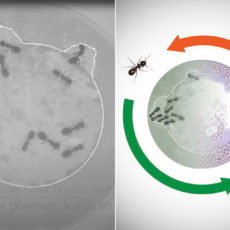
ETH Zurich researchers have figured out how to use a swarm of tiny drones to map rooms, or any other space for that matter. More specifically, drones based on the modular Crazyflie platform, which utilizes stackable printed circuit boards (PCBs) to expand their capabilities.
Flow deck is used for altitude control and motion tracking, while a Loco positioning deck as well as h a UWB module determine relative distances between drones. What pulls everything together is a custom Simultaneous Localization And Mapping (SLAM) algorithm that can be distributed across all the drones in the swarm. This algorithm combines LIDAR scan data with the estimated position of the drone during the scan, and then overlays the data for the scans for each location across different drones.
- Lightweight and Regulation Friendly - At just 135g, this drone with camera for adults 4K may be even lighter than your phone and does not require FAA...
- Palm Takeoff & Landing, Go Controller-Free [1] - Neo takes off from your hand with just a push of a button. The safe and easy operation of this drone...
- Subject Tracking & QuickShots - Effortlessly capture stunning vlogs as DJI Neo smartly follows you. Getting professional footage has never been easier...
Our approach is innovative in three main aspects. First, it enables onboard infrastructure-less collaborative mapping with a lightweight and cost-effective ($20) solution in terms of sensing and computation. Second, we optimize the data traffic within the swarm to support hundreds of cooperative agents using standard wireless protocols such as ultra-wideband (UWB), Bluetooth, or WiFi. Last, we implement a distributed swarm coordination policy to decrease mapping latency and enhance accuracy,” said the researchers.
[Source]










